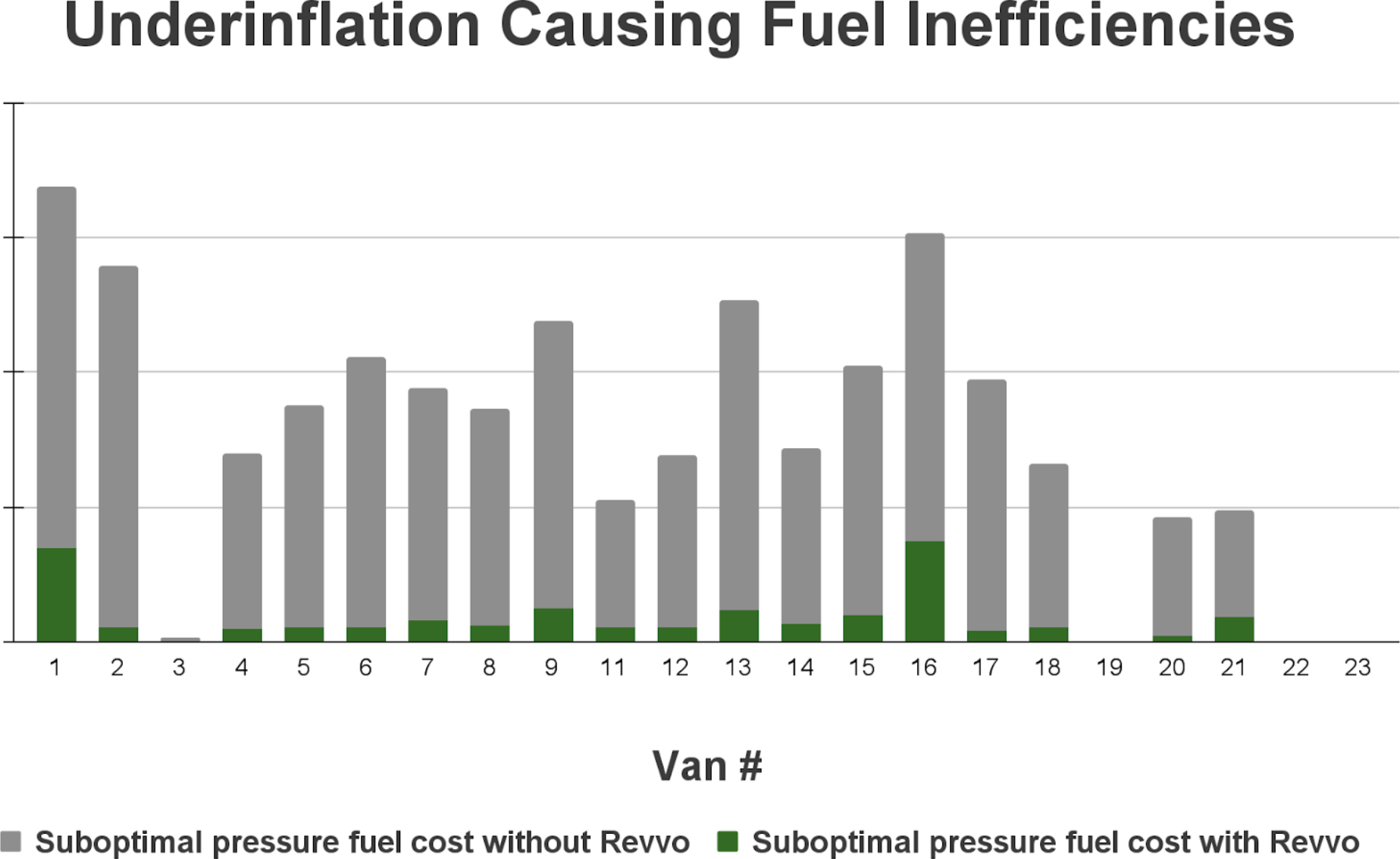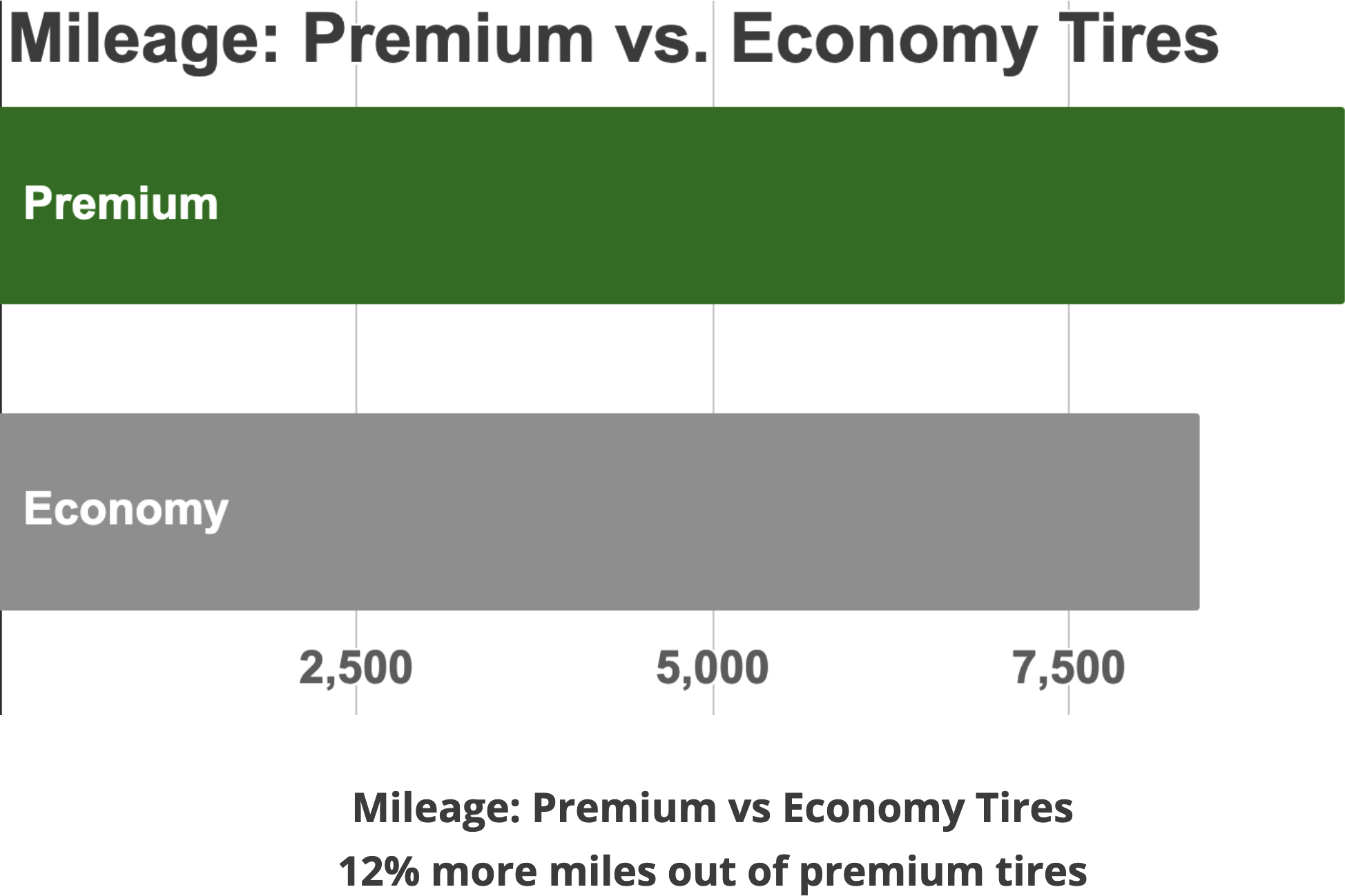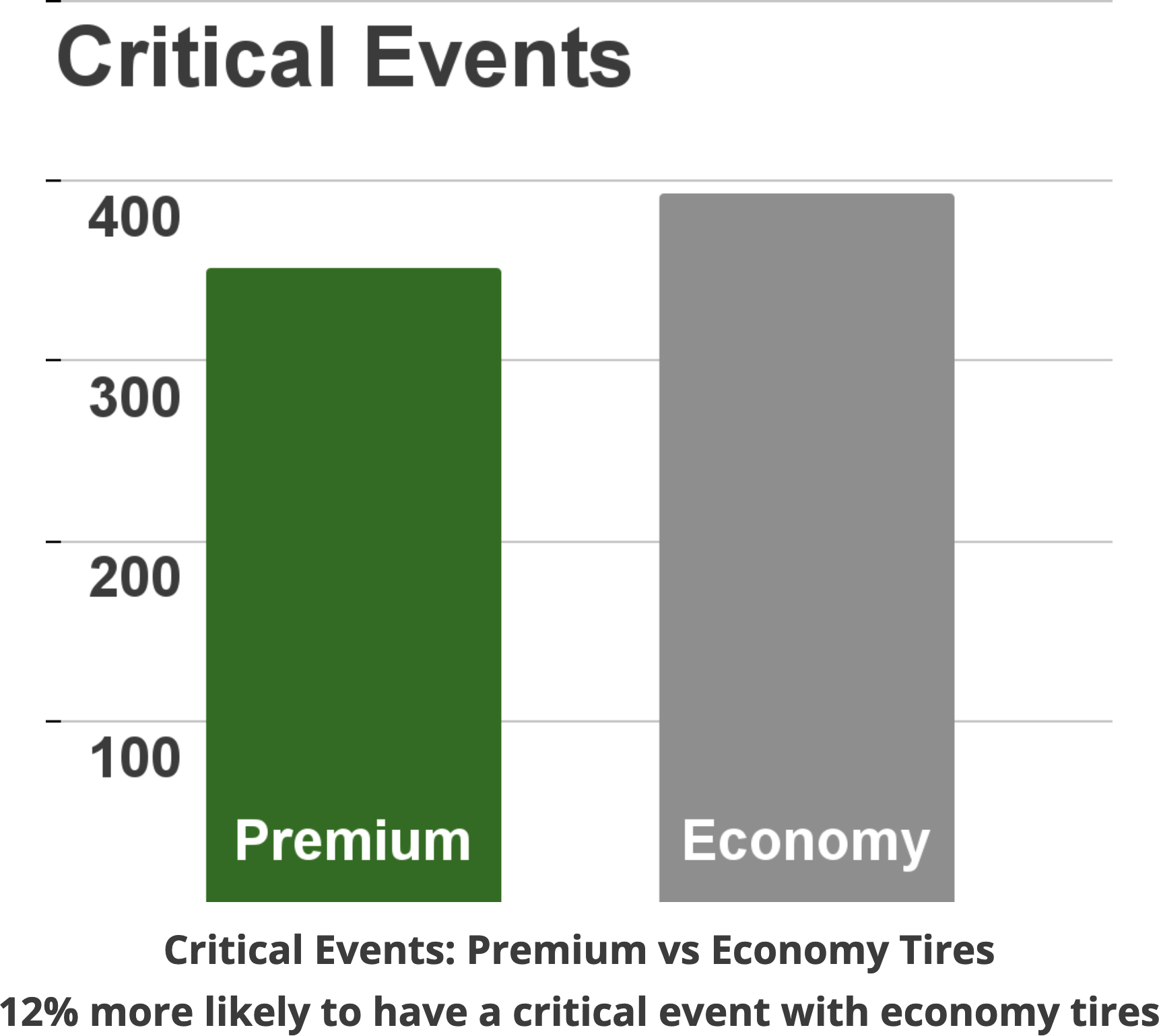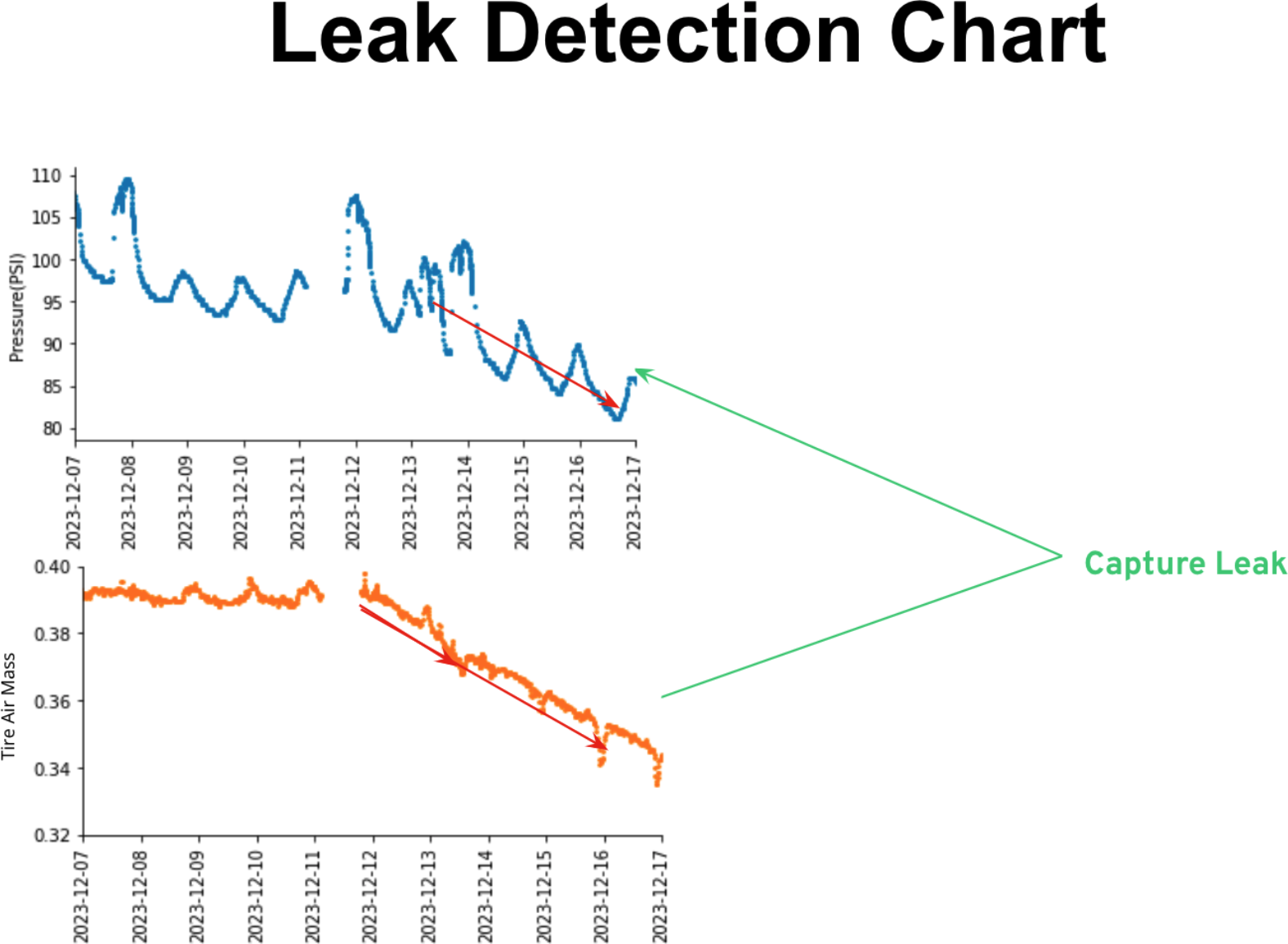Vehicle fleets are struggling to manage the highways of data available to them. Worse, they face challenges in interpreting this data to improve their tire management operations.
Each day, Revvo’s Data Insights Team analyzes over 500 million data points to help our Fleet customers make sense of their information. We’ve looked at data securely collected and transmitted from 375 billion tire rotations, and from 200+ million tire miles. We spend a significant portion of time on ensuring that this dataset is of high quality.
Our philosophy is to give insight that’s both useful and easy to use. For example, customers’ vehicle and tire data including tire pressure can be shared with us via our integration with Geotab — no hardware required.
In this article we’ll focus on Light Duty and DSP vehicles and share some insights.
1. Pump Up To Avoid the Pump
Tire pressure + fuel usage is a common relationship that our customers can optimize. We see frequent underinflation causing fuel inefficiencies.

Pressure + Fuel Usage
Observations: This chart illustrates the impact of suboptimal tire pressure on fuel costs, comparing the fuel cost difference with and without the application of Revvo’s technology across a fleet of 22 vans. The data spans a period of 5 months and covers approximately 47,000 miles.
Deploying Revvo’s Technology consistently over this period to monitor and regulate tire pressure in the 22-van fleet led to significant fuel cost savings. On average, the fleet experienced a substantial $247 reduction in fuel costs per van — saving $13,000 annually in fuel costs just for that one fleet. This highlights the remarkable effectiveness of Revvo’s technology in optimizing fuel efficiency and delivering substantial cost savings for the operational fleet.
2. Keep the Mismatch
For DSPs, the front tires and rear tires have different recommended pressure values due to the vehicle bearing load on its rear axle. We’ve seen many cases where the mismatch is not understood, and tires thus aren’t inflated properly after a tire rotation.
3. Brand Matters
An analysis of six DSP fleets, covering around 5 million miles, revealed a compelling advantage for premium tires.


Observations: In contrast to economy tires, premium tires exhibited significantly fewer slow leaks and critical issues related to low tread and pressure. The premium tires also outperformed by providing an additional 1,000 miles per tire with a substantial 12% increase in mileage. Additional considerations between tire types are discussed here.
4. Precise Leak Detection
Detecting leaks is one of many tire monitoring features included in Revvo products.

More Precise Leak Detection
Observations: The upper plot illustrates a standard time history of tire pressure, making it challenging to pinpoint the onset of a pressure leak. Conversely, the lower plot, employing Revvo’s leak algorithm, significantly enhances leak detection, providing a clear and immediate alert to fleet managers. This process enables prompt corrective action to a pressure leak, ensuring optimal fleet performance.
5. Proactive and Quick —> Fewer Replaced Tires
Over the course of 5 months, Revvo’s technology effectively resolved over twenty-four instances of critically low tire pressure events within days, with an average resolution time of 41 hours. This proactive approach to tire pressure monitoring not only ensured enhanced safety but also resulted in substantial cost savings of $8,800 attributed to minimized tire replacements. You can learn more from the Data Insights Team on how a drop in tire pressure impacts tire life.
Our Data Insights Team helps customers make sense of collected data, finding ways to improve performance, safety, and uptime on the road. It’s gratifying to see our DSP customers adopt the team’s recommendations and improve their operational efficiency. In future blogs we’ll share insights for other fleet types. If you have a question or suggested topic, we’d like to hear from you.



